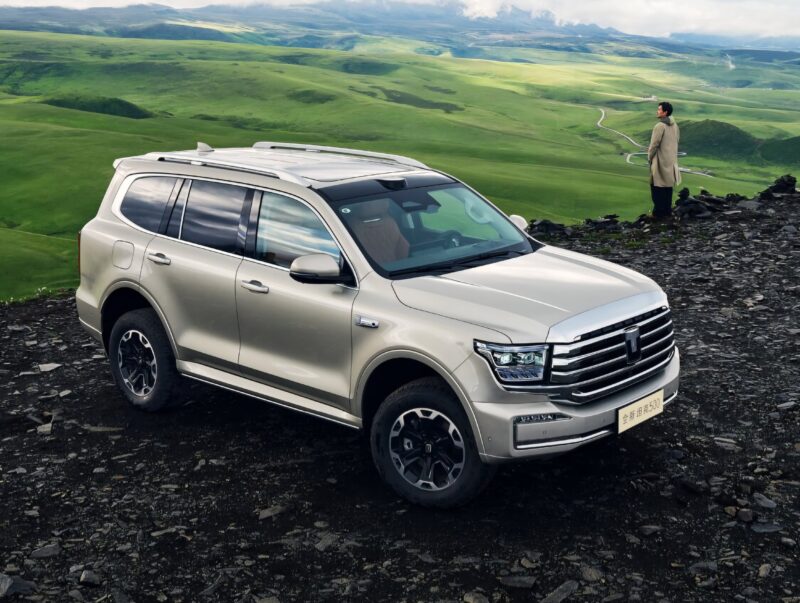Great Wall Motor’s (GWM) all-new Tank 500 officially entered the Chinese market, positioned as an “all-scenario intelligent luxury off-road SUV,” featuring a new roof lidar and GWM’s third-generation Coffee Pilot Ultra advanced driver assistance system. The new car is available in two PHEV and one ICE variants:
- Hi4-Z Smart Edition: 375,000 yuan (52,400 USD)
- Hi4-T Smart Edition: 355,000 yuan (49,600 USD)
- Hi4-T Basic Edition: 335,000 yuan (46,800 USD)
- 3.0T Creative Edition: 355,000 yuan (49,600 USD)
Two hours after the launch, the all-new Tank 500 received 12,257 firm orders.
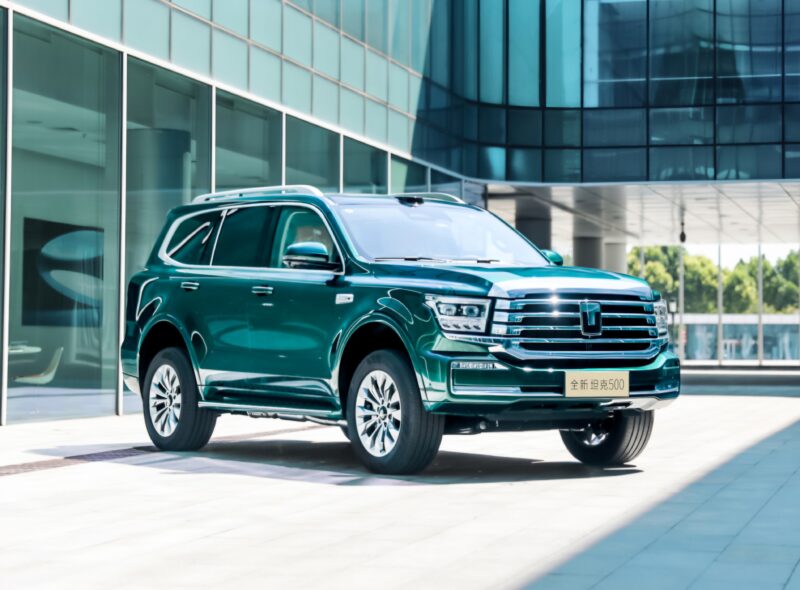
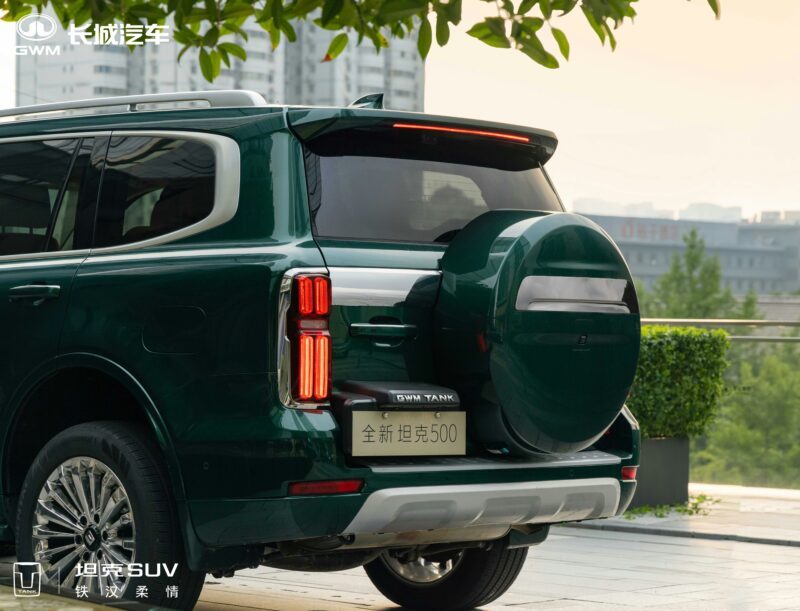
The all-new Tank 500’s exterior is consistent with the previous model. A new Dunhuang Green exterior paint is added for consumers to choose from on top of the existing Kunlun Gold, Pamir Silver, and Mount Everest White. The body dimensions are 5078/1934/1905 mm, and the wheelbase is 2850 mm.
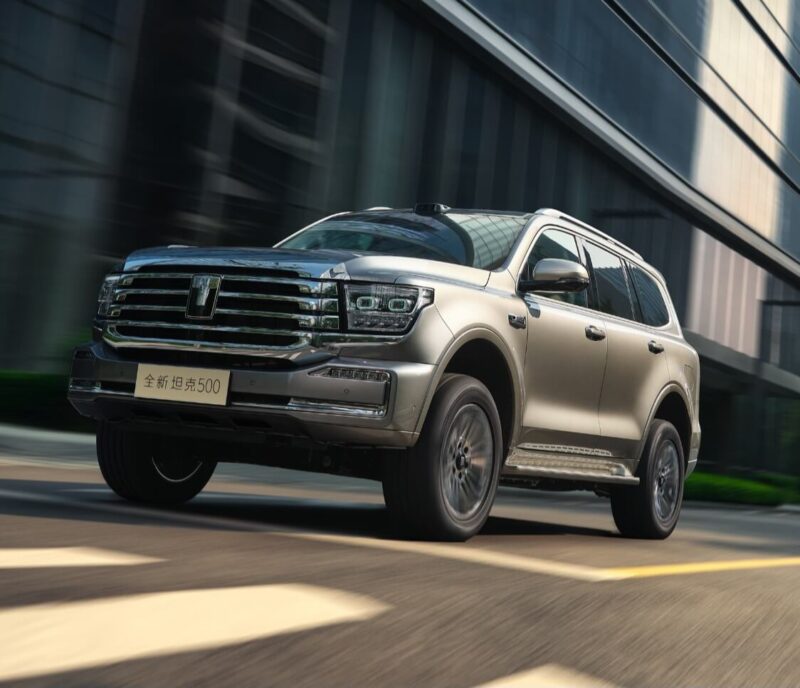
GWM’s third-generation Coffee Pilot Ultra onboard the vehicle is supported by 27 sensors, including one lidar, three millimeter-wave radars, 12 ultrasonic radars, and 11 high-definition cameras, to realize point-to-point navigation on autopilot in urban and highway environments without high-definition maps. GWM claims the parking assist capabilities support more than 200+ parking space types, including vertical, diagonal, and dead-end parking spaces.

Furthermore, the Coffee Night Vision Far-infrared system can detect vehicles up to 120 meters away and pedestrians up to 90 meters away, even in rain, snow, and dusty environments, according to the official.
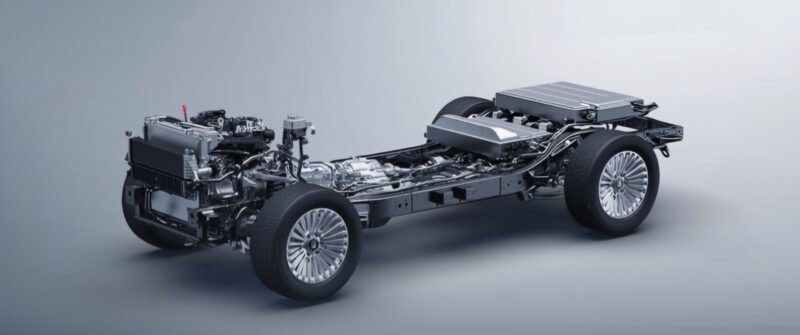
The Hi4-T version uses a 2.0T engine and an electric motor, mated to a 9HAT, with a total system power of 300 kW (402 hp) and a peak torque of 750 Nm. The 2.0T engine outputs 180 kW and 380 Nm. The electric motor outputs 130 kW and 495 Nm. The 37.1 kWh ternary lithium battery provides a pure electric range of 110 km. The 0 to 100 km/h acceleration time is 6.9 seconds, the WLTC comprehensive fuel consumption is 2.06L/100km, and the WLTC comprehensive range is 900 km.
The Hi4-Z version is equipped with the same 2.0T engine and dual electric motors, mated to a 3-speed DHT, generating a total system power of 635 kW (852 hp) and a peak torque of 1195 Nm. The front and rear motors output 215 kW/400 Nm and 240 kW/415 Nm, respectively. The 59.05 kWh ternary lithium battery pack provides a WLTC pure electric range of 201 km. The 0 to 100 km/h acceleration time is 4.3 seconds, the WLTC comprehensive fuel consumption is 0.76L/100km, and the WLTC comprehensive range is 1,096 km.
The gasoline-powered version is powered by a 3.0T V6 engine with a maximum power of 265 kW (355 hp) and a peak torque of 500 Nm, mated to a 9AT.
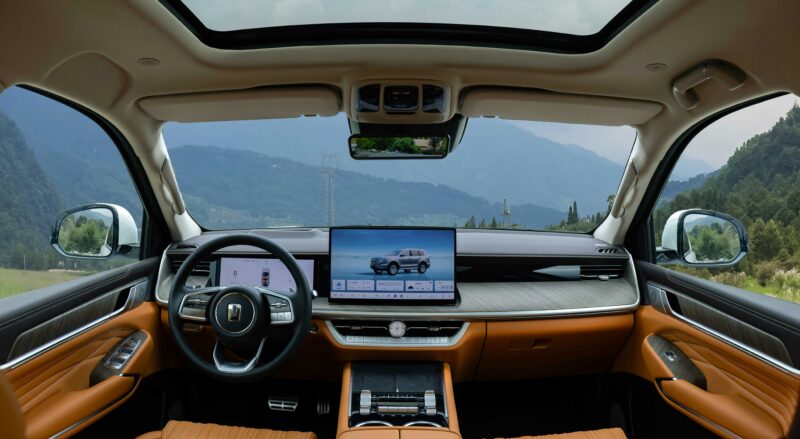
Coming to the cabin, the major change is the addition of an electronic column shifter on the steering wheel, a 50W refrigerator with a temperature range of -6°C to 50°C, and dual 50W wireless charging pads. Otherwise, the cockpit retains the same 12.3-inch full LCD instrument panel, 14.6-inch central control screen, clock under the screen, and HUD, powered by GWM’s Coffee OS 3 operating system that sits on a Qualcomm Snapdragon 8295 chip.
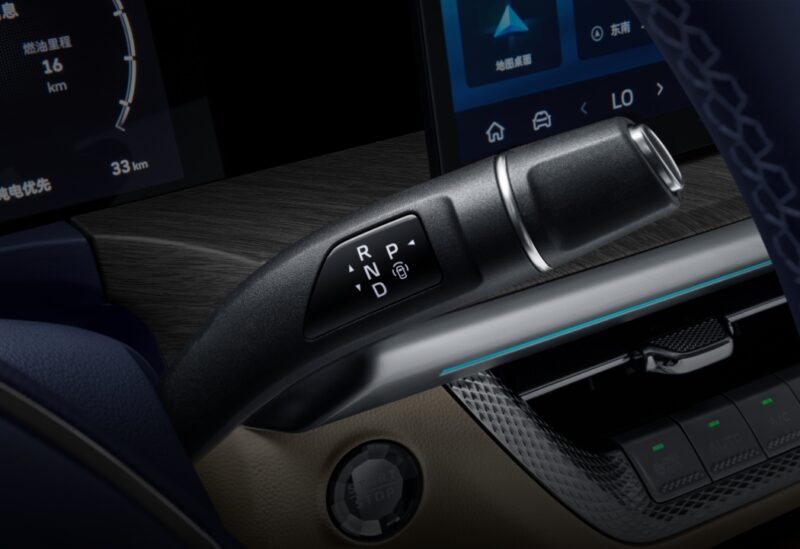
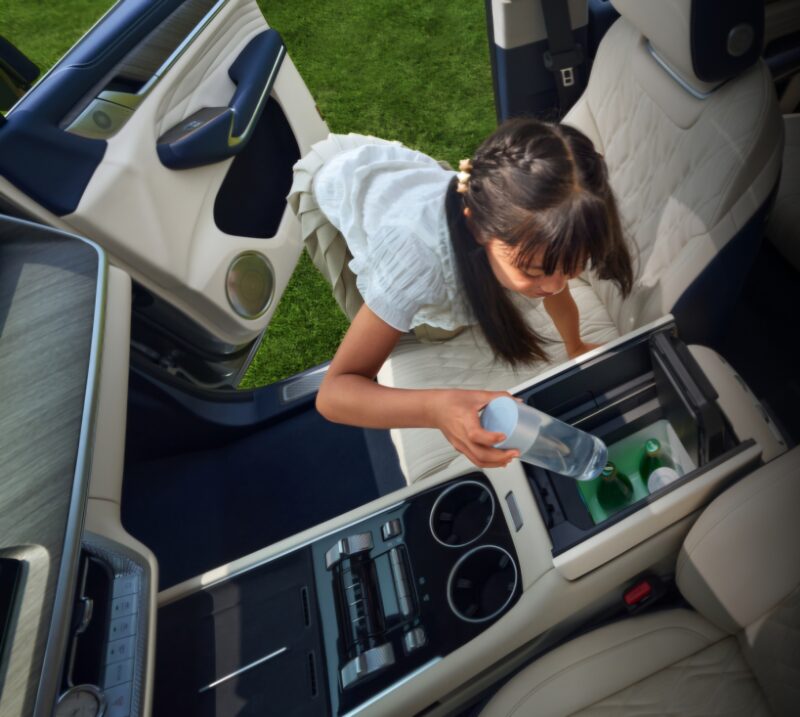
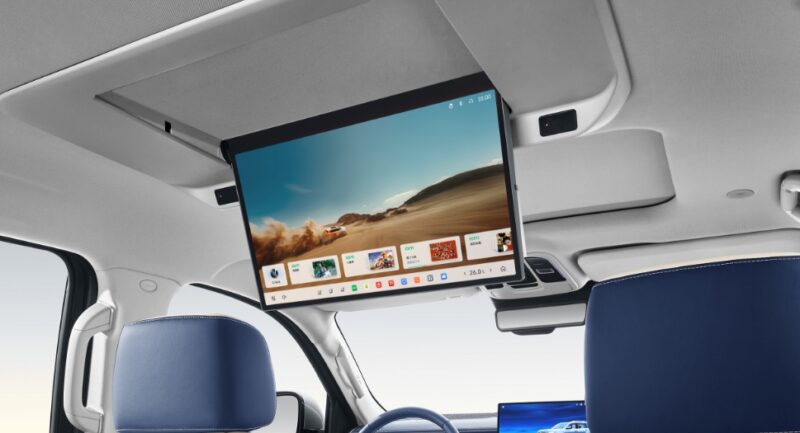
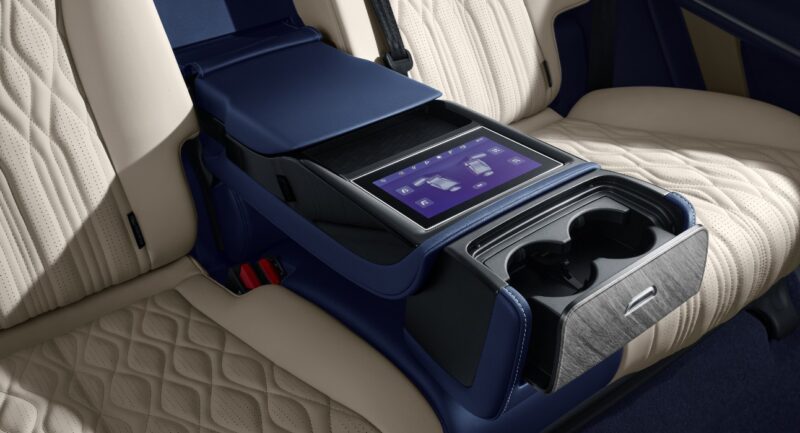
The second row passengers can watch from the 17.3-inch 3K ceiling-mounted entertainment screen, which supports six control modes including voice, gesture, touch, mobile phone, remote control, and via the rear armrest screen. Additionally, the Nappa leather seats come with ventilation and heating for all front and rear seats. The rear seatbacks can be adjusted from 25° to 35° and can also be folded down to expand the trunk volume to 1489L.
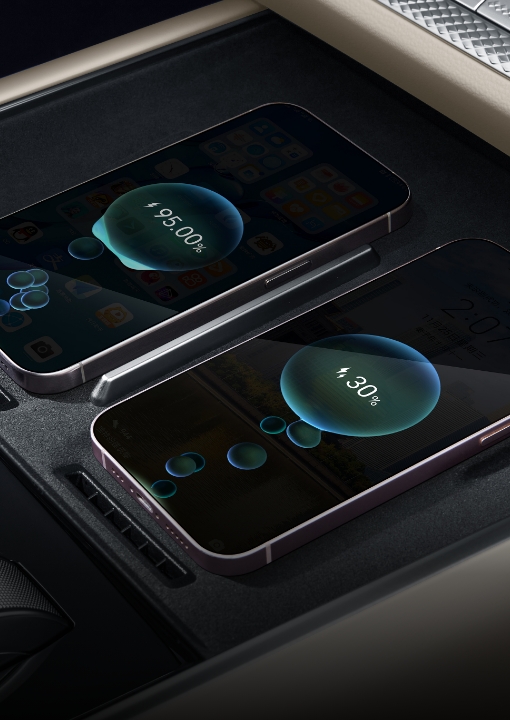
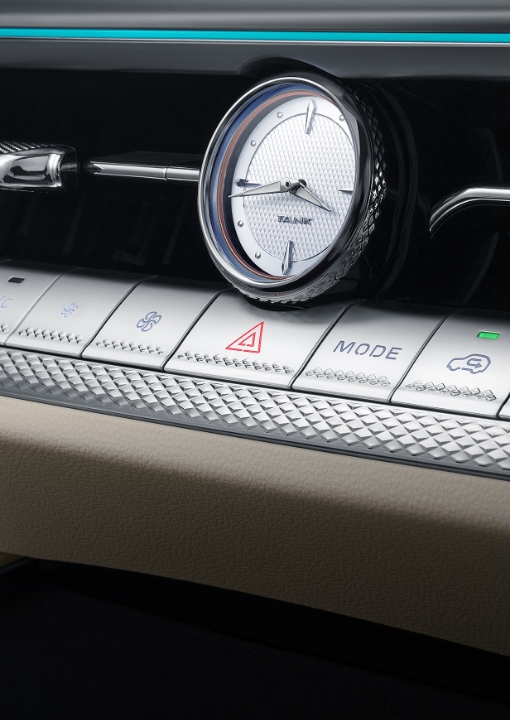
Source: Tank
Update (2025/08/28, 12:26), corrected from paddle shifter to electronic column shifter.



